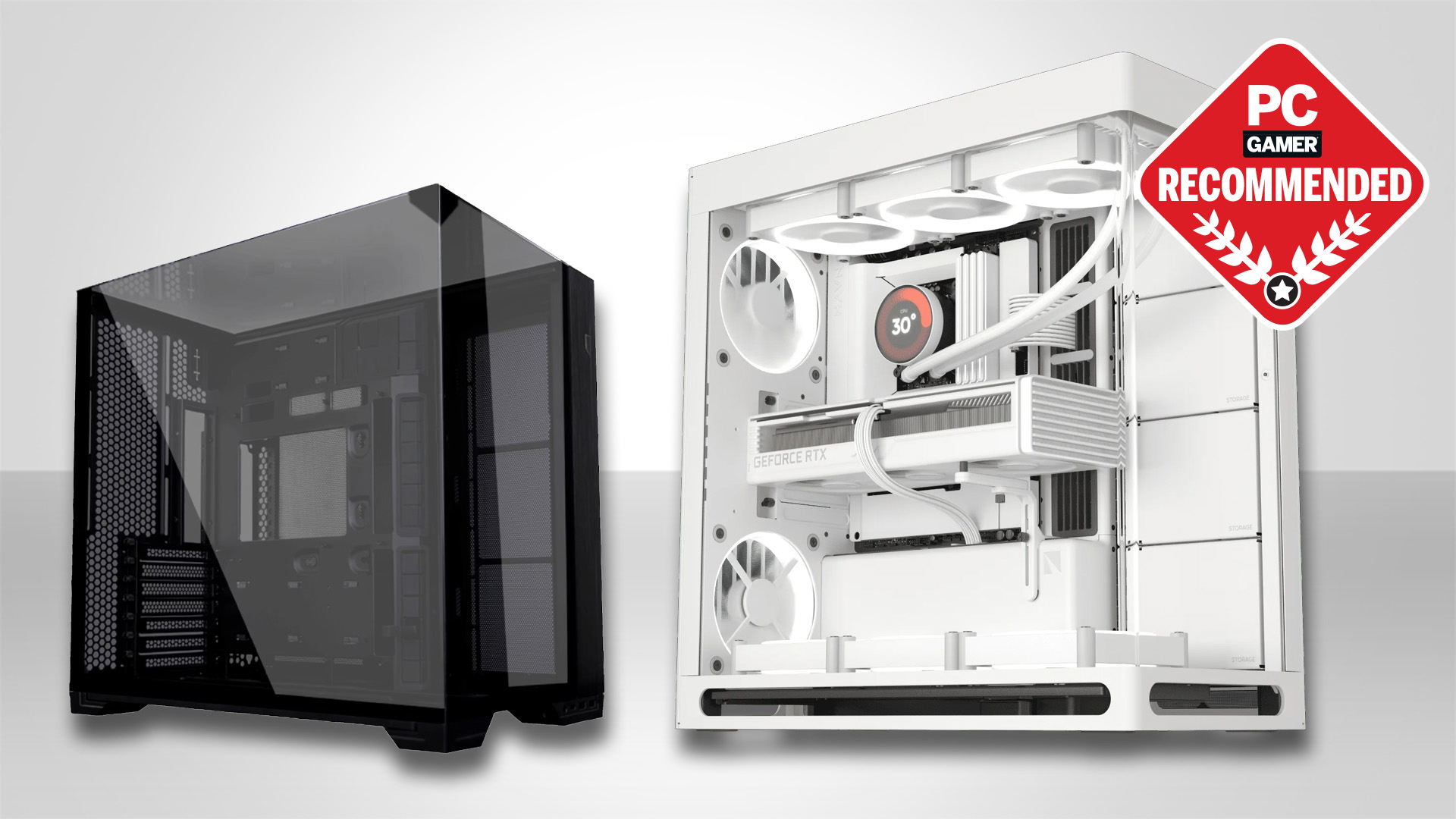Our Verdict
Framework has done what Alienware failed to do: deliver on its promise of upgradeable laptop graphics cards, generation-on-generation. But the premium pricing of the laptop alone, as well as that of the RTX 5070 GPU module, gives the Framework ecosystem an entry barrier so high it will be insurmountable for many PC gamers.
For
- Delivering on the dream of upgradeable graphics
- Quieter than previous generation
- Good battery life
Against
- No configuration software
- Hugely expensive
- Pinching spacers... ouch
PC Gamer's got your back
This might sound ludicrous, but I've never been so happy to see a new gaming laptop release. I was a big fan of the original Framework 16 machine, bringing with it the possibility of a genuinely modular gaming laptop that could grow over the years in the same way a normal desktop rig can. And now here is the theoretically inevitable upgrade, bringing Nvidia's RTX Blackwell architecture as a slot-in option for Framework's 16-incher.
I say 'theoretically inevitable' only because that was effectively the promise Framework made upon launch of the original Framework 16. Yet no other company has managed this feat, with such luminaries as Dell/Alienware being the most notable of failures. So, there's been a little niggle at the base of my brainstem since launch that maybe it might not happen this time, either.
Released at the start of 2024, things looked relatively rosy for the Framework 16, with AMD onboard, helping create the modular Radeon 7700S GPU that was to form the backbone of the first graphics expansion bay. Then the red team just kinda gave up on mobile graphics cards for laptops, and that looked more than mildly worrying for the future of this modular gaming notebook.
Indeed, when the Framework Desktop arrived this August, I found myself mourning what felt like the obvious failure of Framework's modular gaming dream. With nearly two years passing from the original machine's launch and not even a hint of an announcement of a new GPU on the horizon, it felt dead in the water.
Then that same month, Nvidia seemingly comes to the rescue, sliding into the seat at the table vacated by AMD's vanishing mobile GPUs. And this is the result: the RTX 5070 mobile GPU, now available as a slot-in upgrade for any Framework 16 laptop, instantly bringing any old machine into the RTX Blackwell age.

CPU | AMD Ryzen AI 9 HX 370 |
Cores | Threads | 12 | 24 |
Boost clock | 5.1 GHz |
iGPU | Radeon 890M |
Discrete GPU | RTX 5070 |
Cores | 4608 |
TGP | 100 W (on power) |
VRAM | 8 GB GDDR7 |
Storage | 2 TB SSD |
RAM | 32 GB (2x 16 GB) DDR5-5600 SO-DIMM |
Dimensions | 356.58 x 270 x 17.95 mm |
Weight | 2.1 kg |
Price |
✅ You believe in the Framework ethos: You really need to buy into what Framework is trying to do with laptops in order to justify the extra expense of the upgradeable ecosystem given it ultra high price premium.
✅ You really care about e-waste: If you want to do your bit to reduce the e-waste mountain, then Framework's almost endlessly repairable and upgradeable machines are the only game in town. But you need to put your money where your mouth is.
❌ You're on a budget: There's no getting away from the fact that you are paying sometimes twice as much for a Framework 16 as you would be for an equivalently specced standard gaming laptop.
In fairness, it's not just a new GPU release Framework is delivering with the new 16-inch upgrades, because we're also getting the updated AMD AI 300-series of Ryzen mainboards, too, as well as the first-ever instance of a tiny USB-C power brick capable of delivering up to 240 W. Honestly, that last thing is ace on its own.
But the main trick right here is the promise of the modular gaming laptop made real: A new CPU generation drops, and you can decide to fit a new mainboard and CPU. A whole new generation of graphics cards gets released, and you can opt to just spend out on a new mobile GPU to slap into the rear of your laptop.
You're not getting anywhere near the same level of potential options as a desktop machine or even different gaming laptop configurations. The Ryzen AI 300-series mainboards just come in two flavours—the eight-core Ryzen AI 7 350 and the 12-core Ryzen AI 9 HX 370—and the GPU module is just that 100 W RTX 5070 option.
But hey, if you're coming from an RX 7700S machine, that's a hell of an upgrade. At worst, around 30% higher gaming frame rates if you're just talking about straight raster, and far more if you look at something like Cyberpunk 2077, where I'm seeing an 80%+ higher average frame rate return at 1080p.
If you had any fears that the GPU module might be holding back the RTX 5070 silicon, I can at least put those to bed. Testing against other gaming laptops rocking the same chip, and I'm seeing performance only just a shade off the Asus ROG Strix G16 with its slightly higher powered 115 W version of the same GPU.
There's a greater disparity in the Baldur's Gate 3 benchmark, but that is not down to the graphics component so much as the difference between AMD and Intel CPU performance in that game.
Sadly, I don't have the original Framework 16 mainboard I tested to hand, so I can't see what the performance would be like if the new GPU module was just dropped into either a Ryzen 7 7840U or Ryzen 9 7940HS version of the Framework 16. But if I had to make an educated guess, I would doubt there would be much in it between the older Ryzen and the newer when it comes to gaming performance.
Which is another reason why the modular GPU is such a tantalising prospect for a gaming laptop. The performance of CPU generations two years apart is rarely likely to be utterly transformative for a gaming machine, but the relative graphics power should be. And this gives you the option to retain your old mainboard and simply drop in that new GPU and get a whole new feel and lease of life for your laptop.
Another reason why the modular GPU is such a tantalising prospect for a gaming laptop.
Still, I can't help but feel a tinge of disappointment that, again, there is just one option of GPU. It feels a little like a lack of confidence, and I'm not sure which side that's on. Is that Framework hedging its bets or Nvidia only willing to go so far?
A cheaper RTX 5060 upgrade or a fancier RTX 5070 Ti option would have been nice. Though when there was a genuine fear, there wouldn't be anything as AMD exited the mobile GPU game, at least there is something to keep the modular gaming laptop dream alive.
I will say, however, that to buy a Framework 16, you really need to believe in that dream and the ethos behind the company as a whole. Because you're not buying into the ecosystem to save some cash.
When you consider the model I have configured for the review is $1,200 more expensive than the Razer Blade 14 I love so well—and that comes with an OLED screen as standard—you can see the level of premium you're paying for the privilege of having that modular, expandable design.
That's likely to prove a tough ask for the Framework 16, where more than other types of notebook, the best gaming laptops really are generally sold on a price/performance tiering structure.
Sure, the Blade 14 is one and done, while you should theoretically (that word again) be able to just keep upgrading from this one base Framework machine you buy today and pick up another GPU module or mainboard at some point in the future.
But with the RTX 5070 module costing $650 as an upgrade, presumably thus representing a similar price for the next GPU upgrade module down the line, the longer you keep this machine going, the cheaper it gets, comparatively speaking.
Spending another $650 on your Framework 16 while the person with the Blade 14 needs to buy a whole new laptop to stay on level terms… well, at this price, you're still looking to have paid the same price overall one generation along.
If that's a price you're willing to pay not to be part of the e-waste landfill problem, though, then that's something only you can decide. You will just need to have the ready capital available up front. But Framework also has to keep delivering generation-on-generation, and you have to trust that it will keep delivering, for you to ever break even.
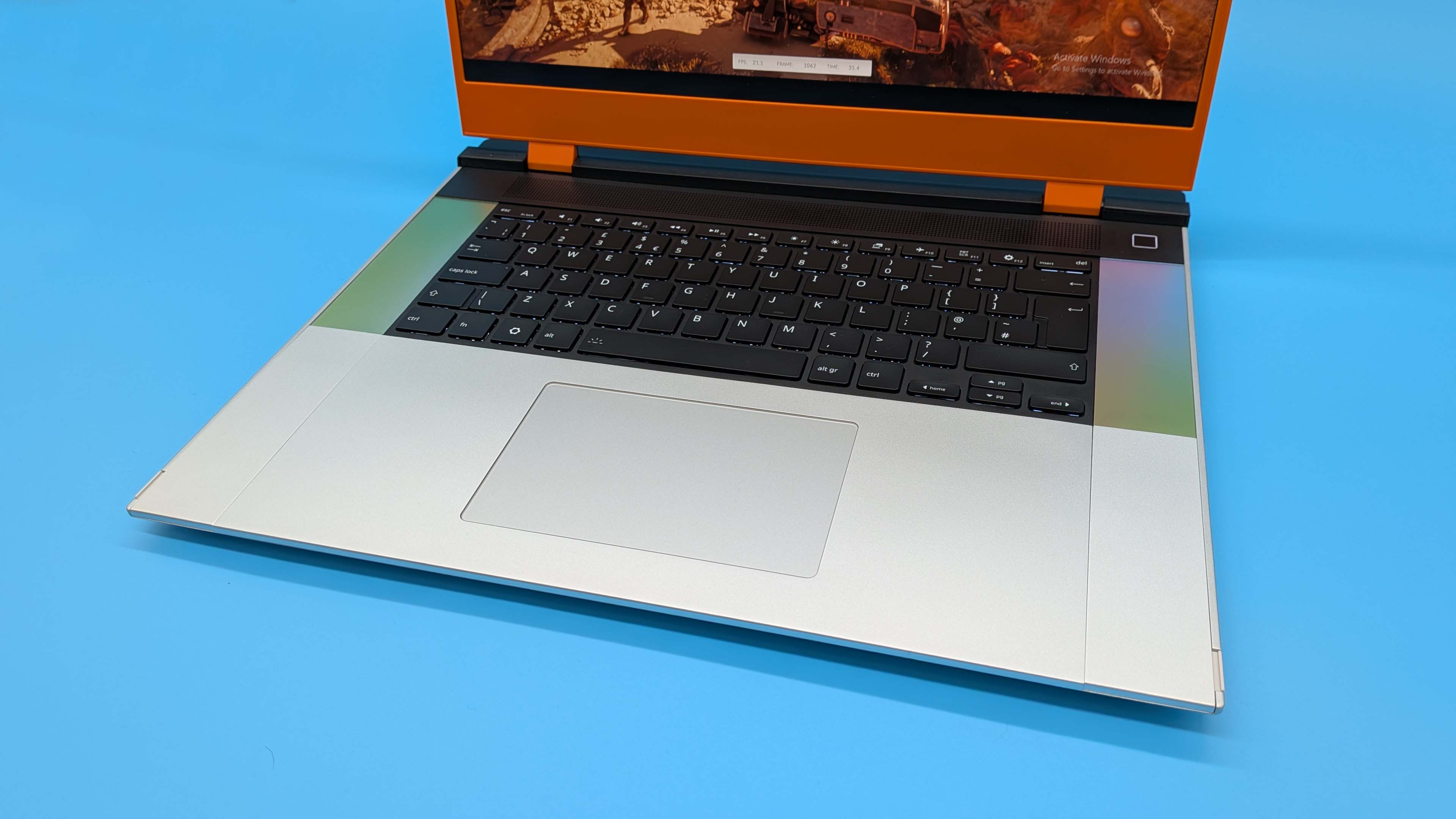
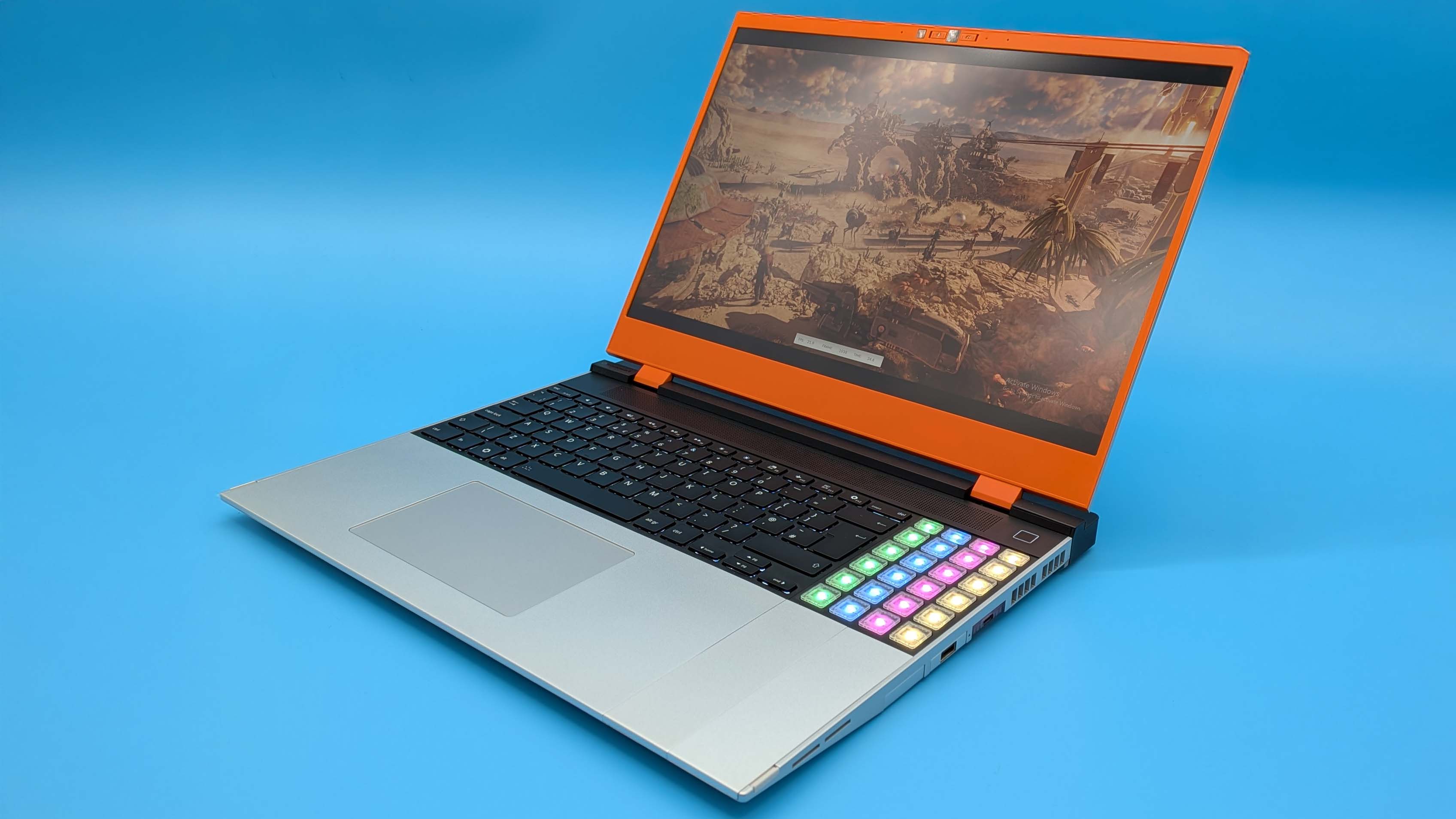


Likewise, how willing you would be to live with this laptop for the next five or six years can only be down to you. It is certainly an acquired taste. Personally, I dig its ultra angular, almost DeLorean-esque, sharp brushed aluminium aesthetic. But there are still things about it which I struggle with.
One physical area that feels lacking by modern standards is the small trackpad. It's small but also arranged high up on the base of the front plate. I've found myself regularly clicking the area between the pad and the edge of the chassis, where my fingers think the actual left/right button areas of the trackpad ought to be.
And when we're talking about physical issues, I really struggle with the spacers either side of the trackpad module. Visually, they now have the same uniform colouring, but no matter how precisely you machine them, the easy configurability of the input section—giving you the option to choose keyboard, numpad, RGB macro buttons, etc.—means there is always going to be some movement to them and some level of gap between the trackpad module and the spacers.
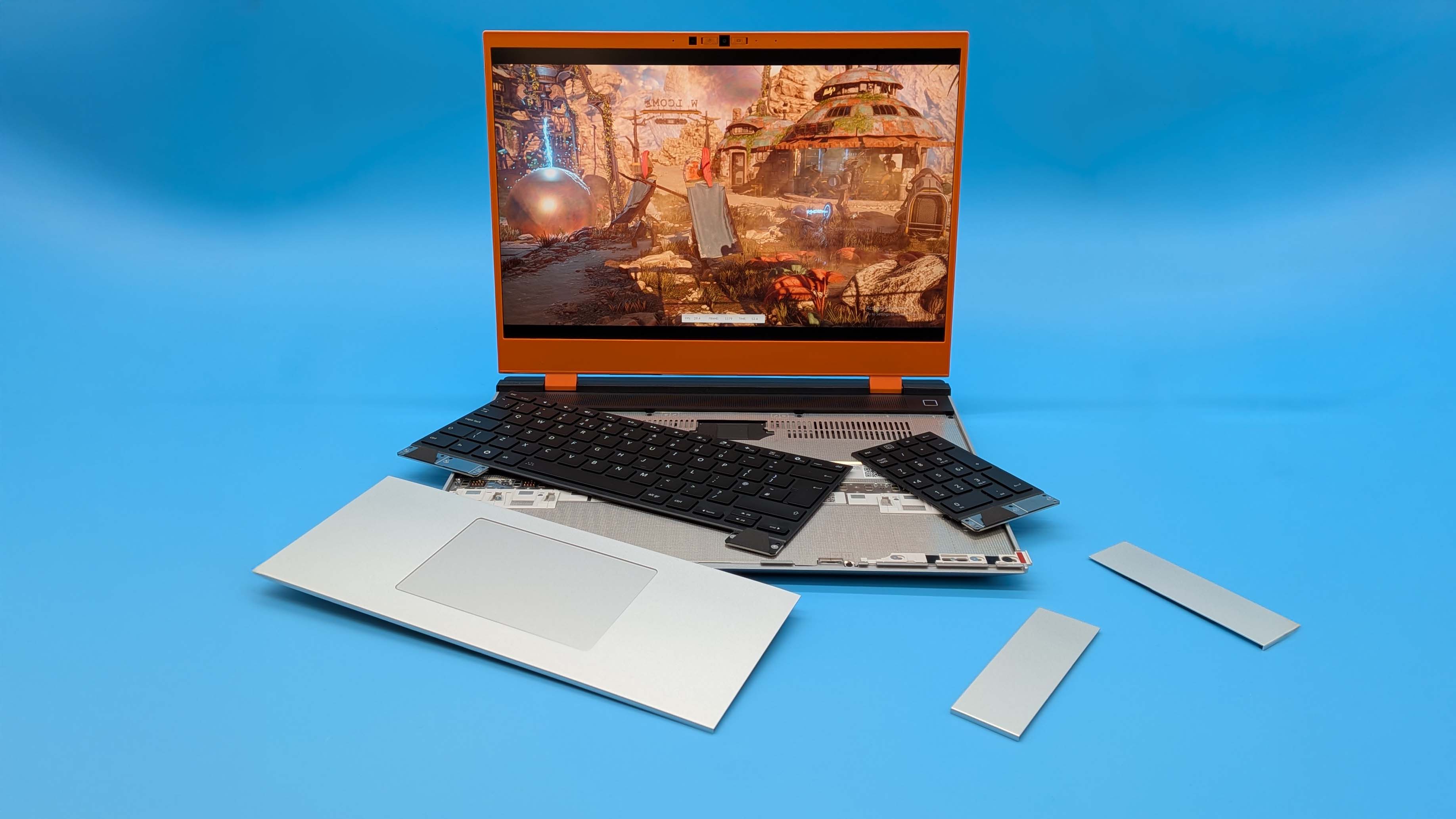




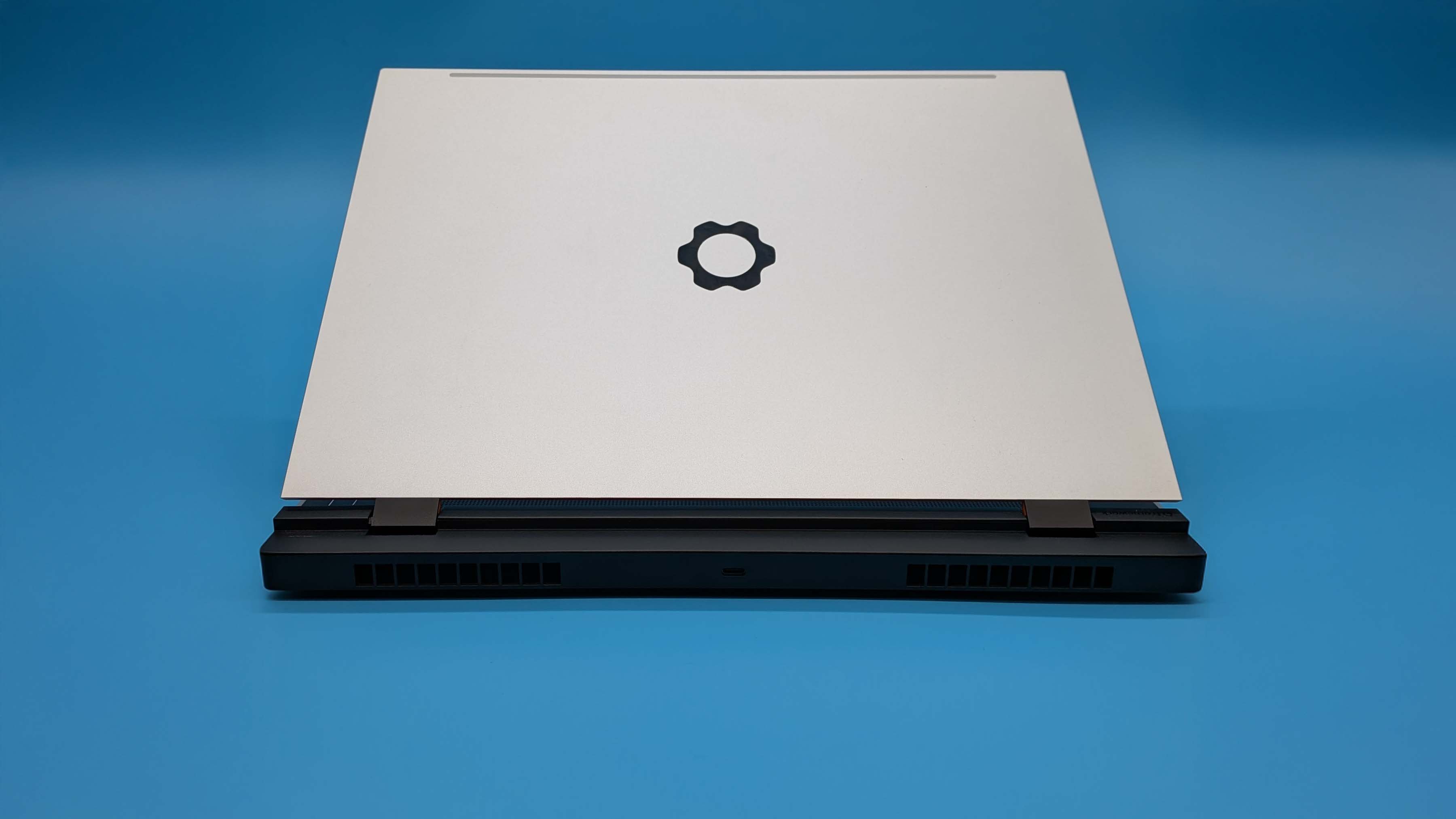
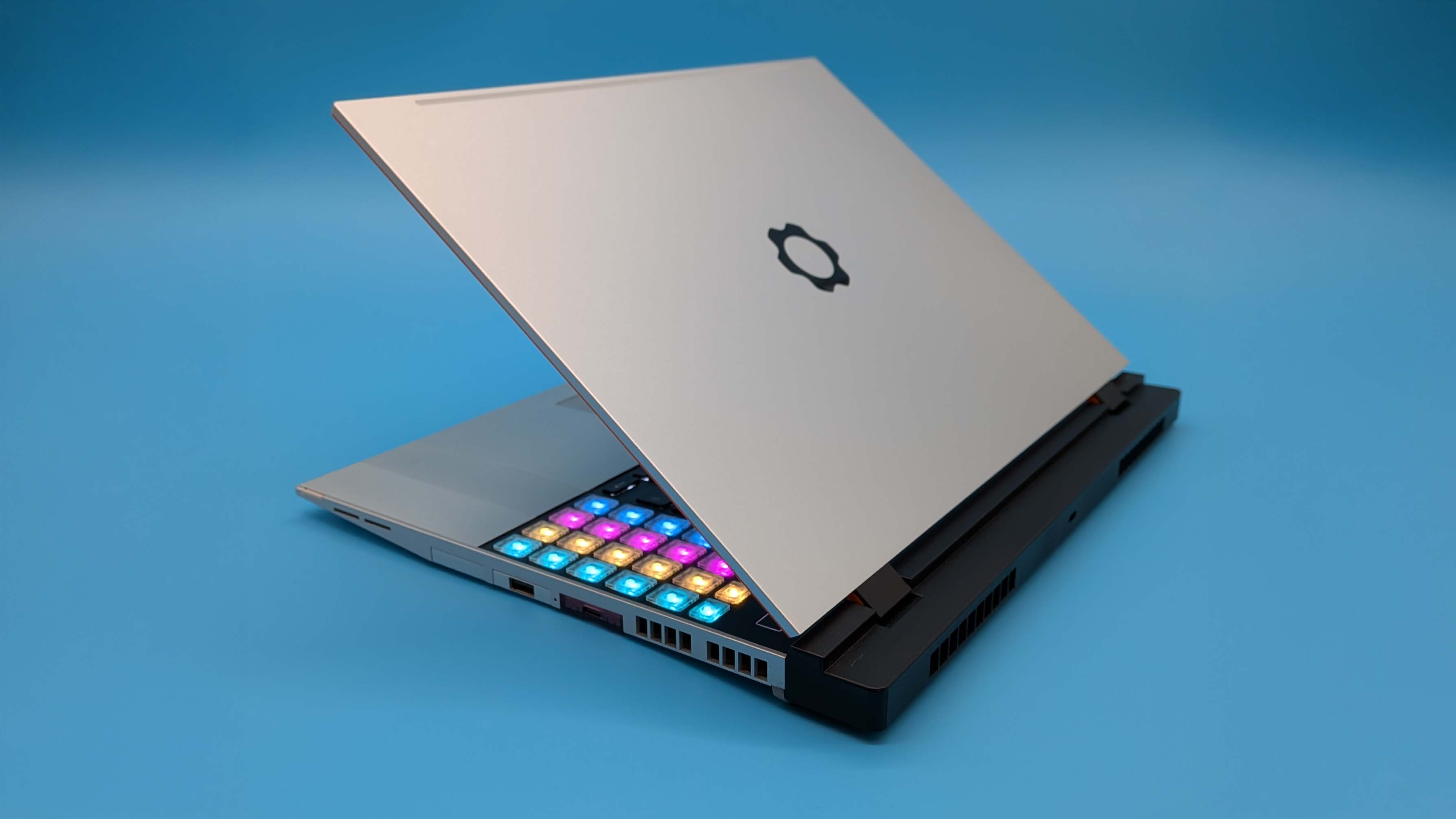
I hate software bloat as much as the next corporeal being, but there is a place for bespoke configuration software on a device level.
And that's a gap where the hairs on my forearms have been regularly trapped while typing this review. It's a genuine pain.
There is another area, a non-physical one, which has been a problem with Framework machines all the way along, and that's on the software side. Now, I hate software bloat as much as the next corporeal being, but there is a place for bespoke configuration software on a device level.
All Framework has to offer is the performance profiling that your OS of choice offers. With gaming laptops especially, I want a more granular level of control than simply Best performance, Balanced, and Best power efficiency offers in Windows. Lenovo's intricate software is the best I've seen on its Legion Pro 7i machine, but with the Framework, I cannot control CPU or GPU independently or even just manage fan profiles.
Thankfully, the latest cooling design on the new GPU module delivers a better aural experience than the previous generation, making it a relatively good experience even when taxing that RTX 5070 to its limits. But I'm a PC gamer and I want some control, godammit.
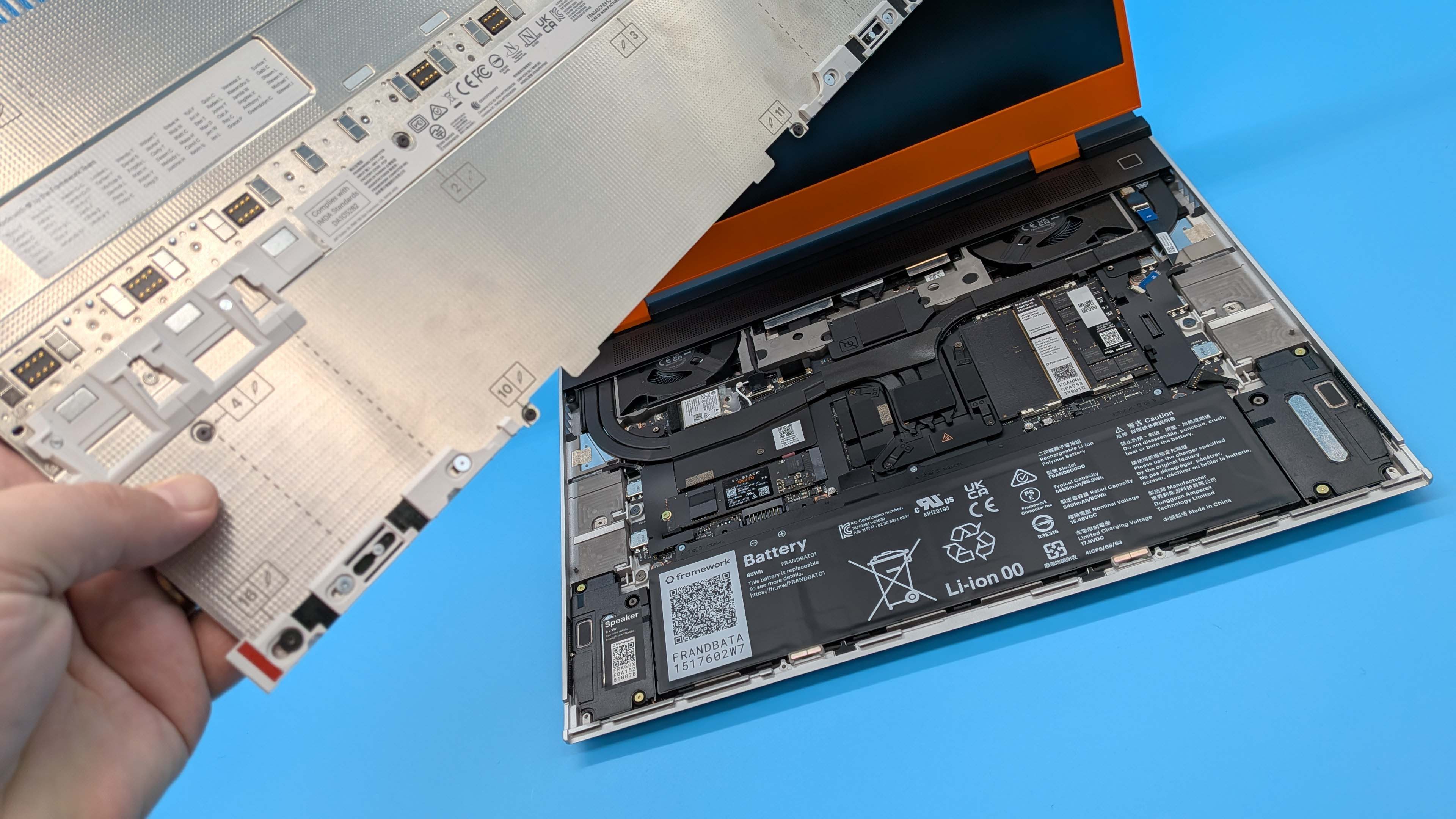

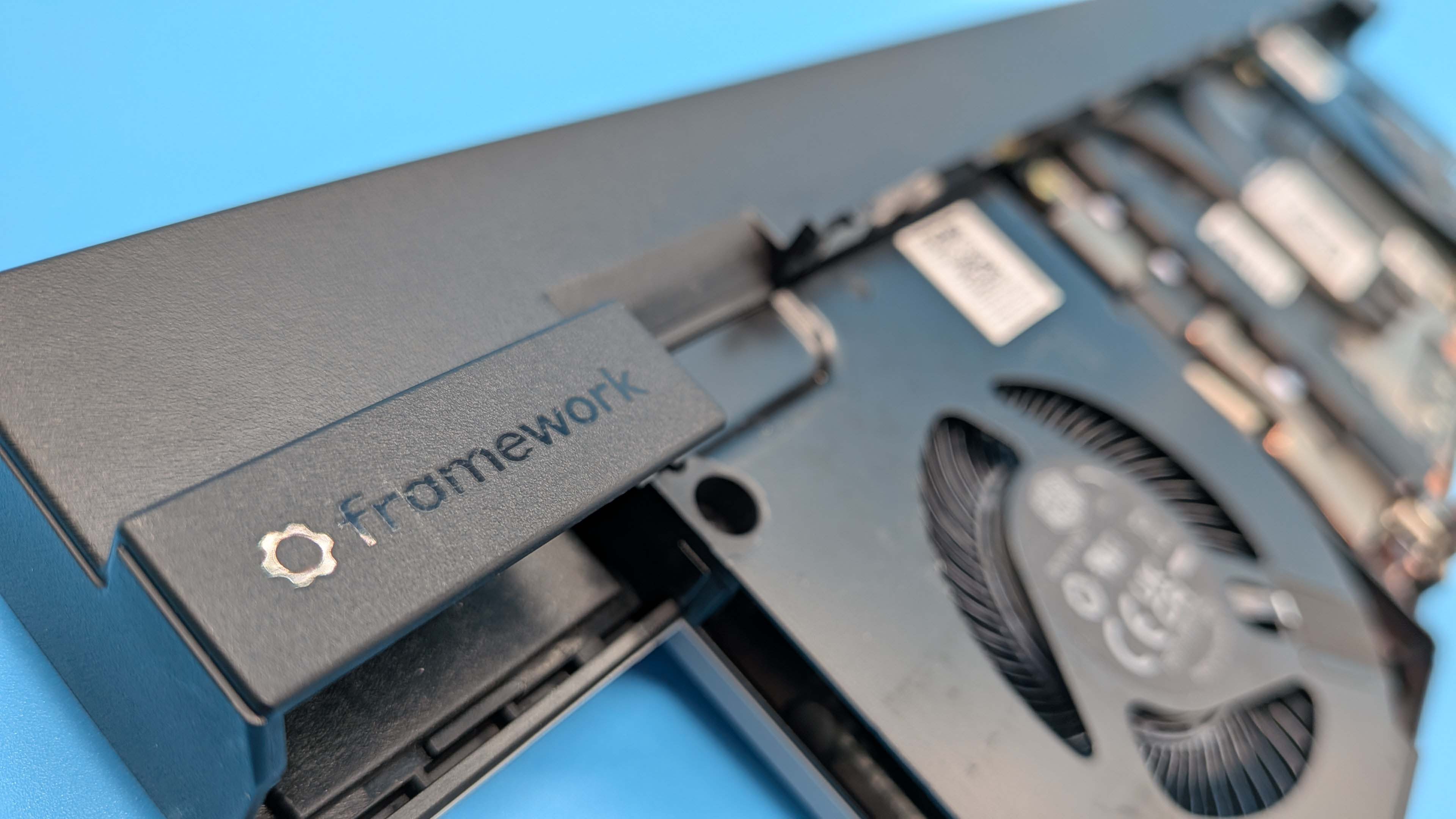
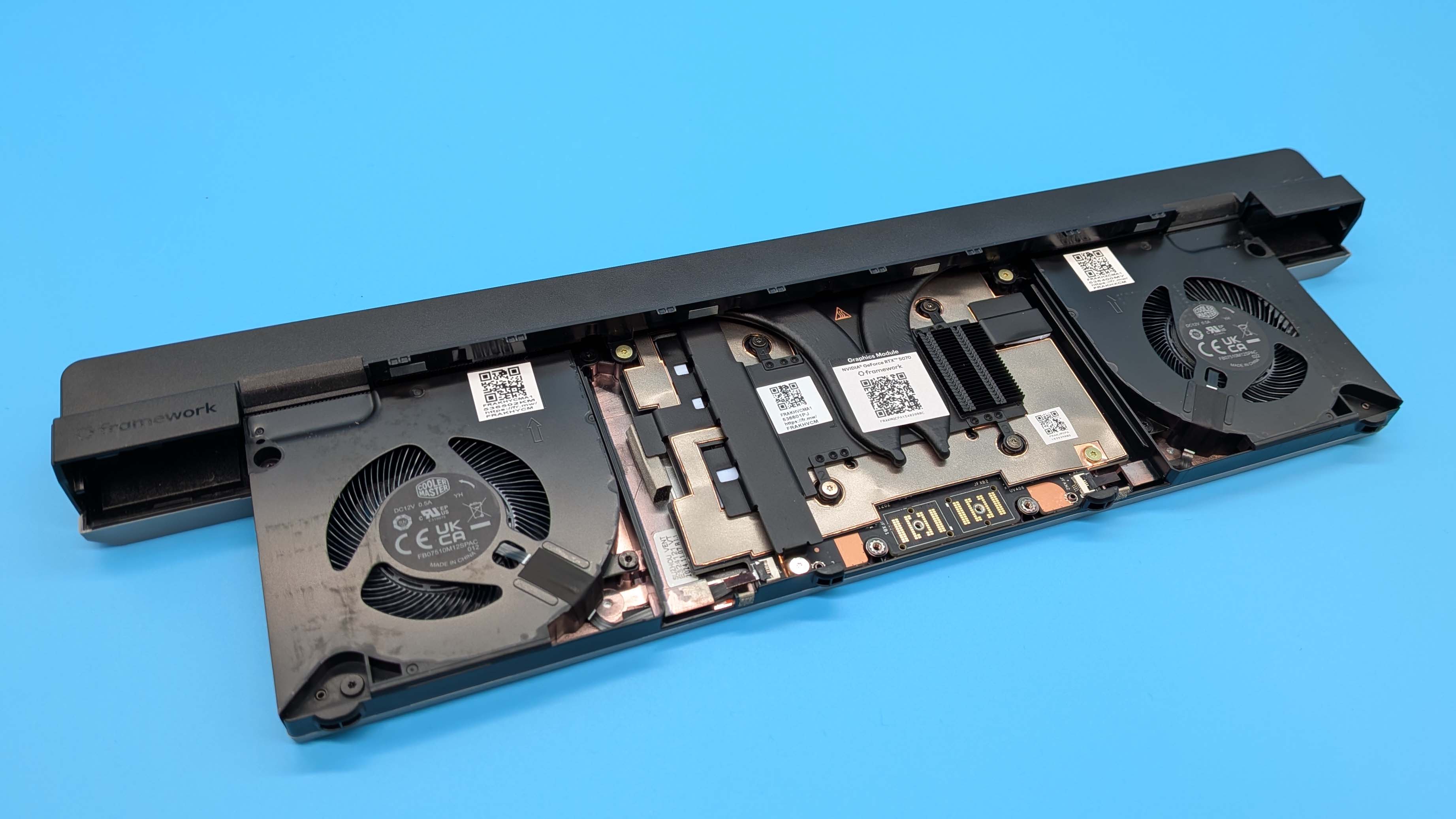
So, where does that all leave us? As I said at the beginning of this screed, I'm incredibly happy to see Framework actually make good on the promise of upgradeable laptop gaming GPUs. But would I actually buy one? For me, I think the initial high price tag is something I would really struggle with. I get there's a premium for this sort of platform, especially as a small batch manufacturer without the manufacturing might of Dell or Asus, you don't get the beneficial economies of scale, but over $3,000 for an RTX 5070 gaming laptop… I couldn't do it.
For half the price right now, you can buy a 16-inch RTX 5070 Ti gaming laptop from MSI, and for $1,200 less, you can pick up the RTX 5070 Razer Blade 14. Those are two data points that would immediately have me spending my money elsewhere.
But I want this to succeed, and I want Framework's design to be more widely adopted. A modular GPU system used by multiple manufacturers would drive the costs down and ensure graphics card makers consider making more than the one option Framework gets.
Right now, however, ethical spending is one thing, but I'm just not that good a person.

Best gaming laptop 2025
All our current recommendations







Framework has done what Alienware failed to do: deliver on its promise of upgradeable laptop graphics cards, generation-on-generation. But the premium pricing of the laptop alone, as well as that of the RTX 5070 GPU module, gives the Framework ecosystem an entry barrier so high it will be insurmountable for many PC gamers.

Dave has been gaming since the days of Zaxxon and Lady Bug on the Colecovision, and code books for the Commodore Vic 20 (Death Race 2000!). He built his first gaming PC at the tender age of 16, and finally finished bug-fixing the Cyrix-based system around a year later. When he dropped it out of the window. He first started writing for Official PlayStation Magazine and Xbox World many decades ago, then moved onto PC Format full-time, then PC Gamer, TechRadar, and T3 among others. Now he's back, writing about the nightmarish graphics card market, CPUs with more cores than sense, gaming laptops hotter than the sun, and SSDs more capacious than a Cybertruck.
You must confirm your public display name before commenting
Please logout and then login again, you will then be prompted to enter your display name.
